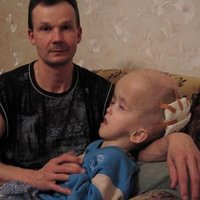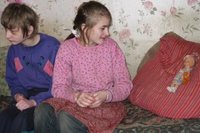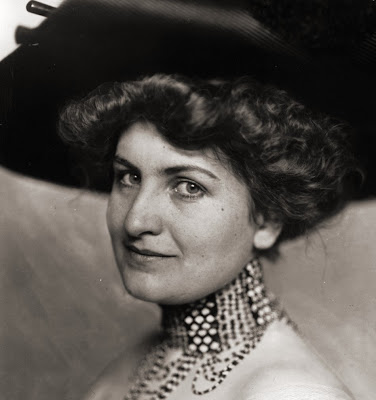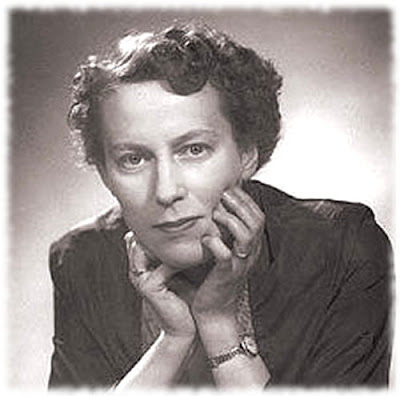Bring forth new life - Chernobyl 26th April 1986

It was a night spent in the basement of a burnt out building.
People injured by the atomic bomb took shelter in this room, filling it.
They passed the night in darkness, not even a single candle among them.
The raw smell of blood, the stench of death.
Body heat and the reek of sweat. Moaning.
Miraculously, out of the darkness, a voice sounded:
"The baby's coming!"
In that basement room, in those lower reaches of hell,
A young woman was now going into labor.
What were they to do,
Without even a single match to light the darkness?
People forgot their own suffering to do what they could.
A seriously injured woman who had been moaning but a moments before,
Spoke out:
"I'm a midwife. Let me help with the birth."
And now life was born
There in the deep, dark depths of hell.
Her work done, the midwife did not even wait for the break of day.
She died, still covered with the blood.
Bring forth new life!
Even should it cost me my own,
Bring forth new life!
by Sadako Kurihara
Early in the morning of 26th April 1986, at 01.24 Moscow time, two explosions destroyed reactor no. 4 at the Soviet nuclear power station at Chernobyl in Ukraine. The explosions released 100 times as much radiation into the atmosphere as the atomic bombs dropped on the Japanese cities of Hiroshima and Nagasaki at the end of the Second World War. Much of this radiation fell on the now
 independent republics of Belarus, Ukraine and in western Russia. My own words are inadequate, so to mark this dreadful event and all other nuclear disasters, and to express the hope that history will not be repeated, I offer the moving photographs of Observer journalist Juliette Jowitt together with Sadako Kurihara's poem Bring forth new life.
independent republics of Belarus, Ukraine and in western Russia. My own words are inadequate, so to mark this dreadful event and all other nuclear disasters, and to express the hope that history will not be repeated, I offer the moving photographs of Observer journalist Juliette Jowitt together with Sadako Kurihara's poem Bring forth new life. Sadako Kurihara (right) was at her home in Horishima when the atomic bomb exploded on August 6th 1945. Two days later, in a nearby basement shelter just a mile from ground zero, a baby was born in pitch darkness surrounded by the dead and dying. The seriously injured nurse that delivered the child died, but the baby survived and grew into an adult who sixty years later still lives in the city.
Sadako Kurihara (right) was at her home in Horishima when the atomic bomb exploded on August 6th 1945. Two days later, in a nearby basement shelter just a mile from ground zero, a baby was born in pitch darkness surrounded by the dead and dying. The seriously injured nurse that delivered the child died, but the baby survived and grew into an adult who sixty years later still lives in the city. After the trauma of Hiroshima Sadako Kurihara was determined to express her furious hatred of nuclear weapons, and to campaign against their use. Her talent as a poet gave her a powerful outlet for her beliefs. Her most famous work is the story of the baby born amongst nuclear devastation. In Japanese it is Umashimenkana, which translates as Bring forth new life.
After the trauma of Hiroshima Sadako Kurihara was determined to express her furious hatred of nuclear weapons, and to campaign against their use. Her talent as a poet gave her a powerful outlet for her beliefs. Her most famous work is the story of the baby born amongst nuclear devastation. In Japanese it is Umashimenkana, which translates as Bring forth new life.For the rest of her life Sadako Kurihara was a staunch anti-war and anti-nuclear campaigner. She published a literary magazine on the theme of the atom bomb attacks on Japan, and circulated an anthology of anti-war poems when discussion of the bombing was restricted by
 the occupying Allied powers. The author of more than five hundred poems in a writing career spanning more than seventy years, Sadaro Kurihara lived to see her worst fears realised in the Chernobyl disaster, and died in March 2005 aged 92.
the occupying Allied powers. The author of more than five hundred poems in a writing career spanning more than seventy years, Sadaro Kurihara lived to see her worst fears realised in the Chernobyl disaster, and died in March 2005 aged 92.* The colour photos are from Juliette Jowitt's excellent Observer photo feature 'Chernobyl 20 years on' which I urge you to read. The moving header picture is of Tolya who lives in Vesnovo Children's Asylum, which is also where the third photo down is taken. The second photo is of Sasha, 10, who was diagnosed with hydrocephalus when she was a baby but doctors were unable to operate because she had an infection. The final picture is of Luba, 19, (left) and Ira, 15, who were both born in Belarus with mental disabilities. Photo of Sadako Kurihara is from Art Random, but you will need a Japanese character set installed to view the text.
* International Physicians for the Prevention of Nuclear War (IPPNW) is a non-partisan international grouping of medical organisations dedicated to the abolition of nuclear weapons. They work with the long-term victims of nuclear explosions and accidents from Hiroshima to Chernobyl, and their work has been recognised with the 1984 UNESCO Peace Prize, and 1985 Nobel Peace Prize. For the last 21 years IPPNW-Concerts has been working from its Berlin office with top musicians world-wide to raise funds for their work.
Related resources On An Overgrown Path include * The Winter's Tale * Radiance of a thousand suns * Musicians against nuclear weapons * Mahler songs mark Chernobyl anniversary *









Comments
The 'Wheel of Life' link points here - http://www.overgrownpath.com/2008/10/wheel-of-life.html
but that linked post is off message for what you want.
For ore information on the Vesovo Children's Home it is probably best to start with their website - http://www.chernobyl-international.com/what_we_do/vesnovo_childrens_mental_asylum.507.html
A Google search turns up quite a few other links -
http://www.google.co.uk/search?source=ig&hl=en&rlz=&q=+Vesnovo+Children&btnG=Google+Search&meta=lr%3D&aq=f&aqi=&aql=&oq=&gs_rfai=
Hope this helps, again apologies for the delay.
Pliable